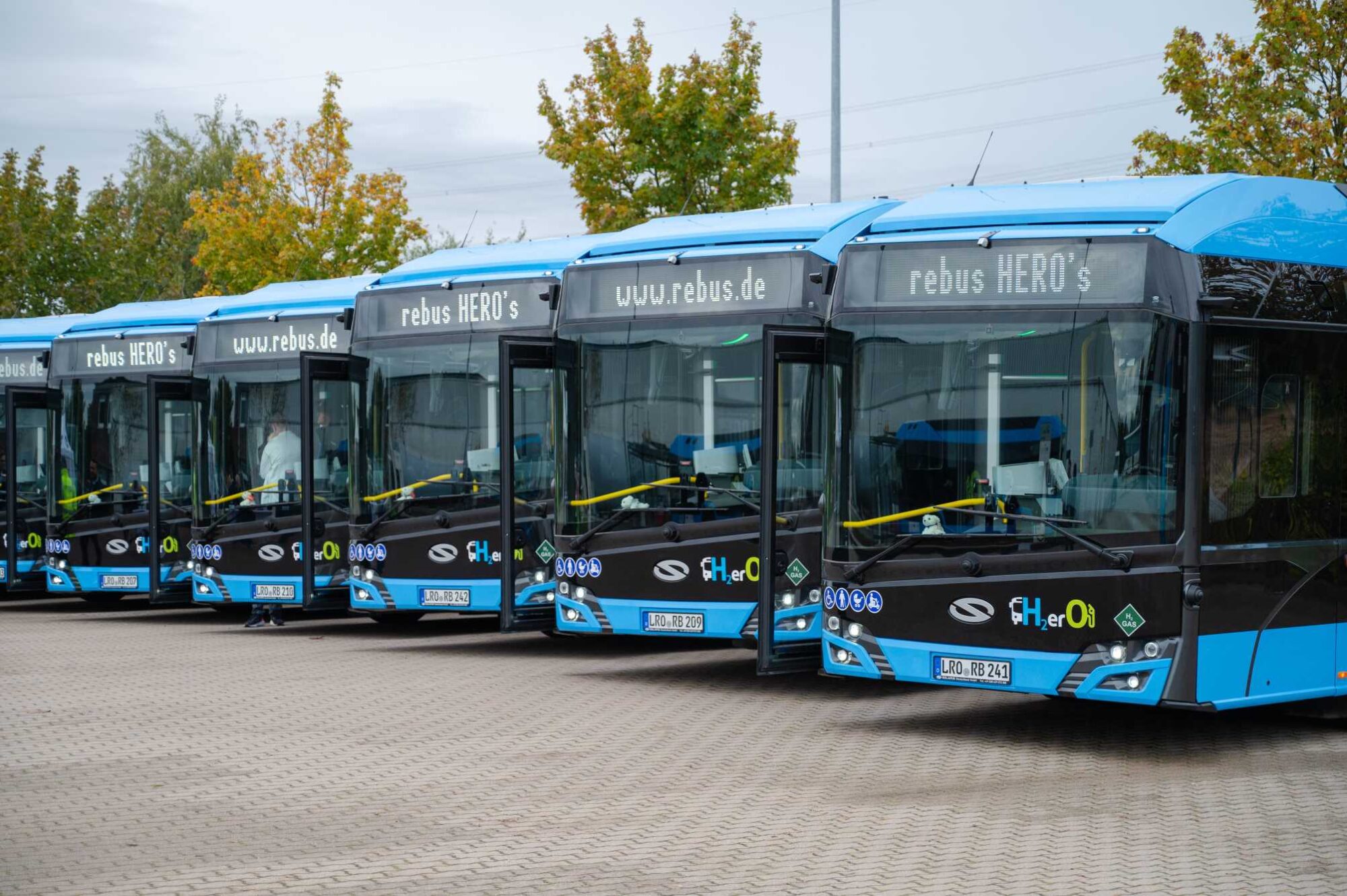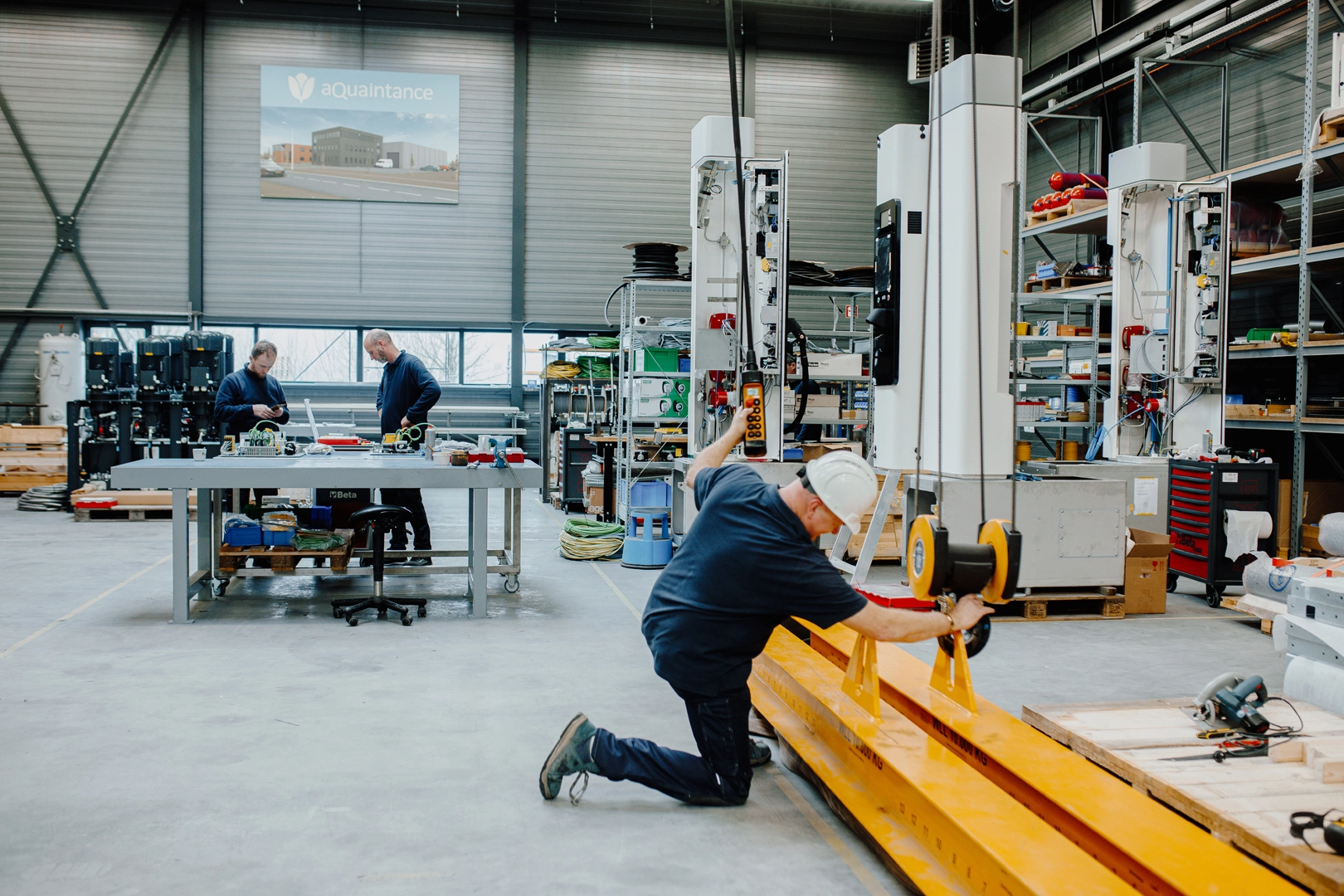
Refueling Buses
The future of public transportation is zero emissions. Are you ready?

Zero-emission public transport is no longer a distant vision, but a hard deadline. By 2030, buses in more and more European countries will have to be completely emission-free. This means a big change for public transport operators and contracting authorities. The question is not if, but how to make this transition.
The transition to zero-emission transport is a challenging one: What technology is best for your operation? How do you ensure a reliable and efficient energy supply? And how do you keep your company from falling behind the regulatory and competitive curve? How can you transition to zero emission transportation without disrupting operations and what subsidies are available?
Hydrogen buses offer a powerful solution for long distances. They can be fully refueled in a short time, similar to a conventional bus.
The key to a successful transition is a refueling infrastructure that fits your fleet and operational needs. Our hydrogen refuelling stations are modular and flexible enough to grow with your ambitions. Whether you are starting an initial pilot or looking to make your entire bus fleet zero emission, we can help you take the right steps.
Is your company ready for the future? Let us guide you through the transition.
Our technology has been deployed in successful hydrogen bus projects such as the rebus project in Güstrow, Germany.

In October 2024, we celebrated the official opening of the hydrogen refueling station in Güstrow, specially designed for H2APEX to support one of Europe’s largest hydrogen bus fleets, operated by Regionalbus Rostock (rebus).
One station for multiple vehicles
Do you want to refuel more than just buses? Our refueling stations can be combined for various applications, such as taxis, garbage trucks and more.
Check out our project with Holthausen where we developed a refueling station for buses, trucks as well as city cleaning vehicles in cooperation with the municipality of Groningen.
| Battery Electric Buses | Fuel Cell Electric Buses | |
|---|---|---|
| Zero emission | Yes | Yes |
| Range | Up to 350 km | Up to 550 km |
| Bus schedule flexibility | Limited | High |
| - Charging / Refueling time | 4-6 hours (overnight charging) | 6-12 min. after a shift |
| - Stability of the range | Decreases in hot/ cold weather or hilly areas | Remains stable |
| - Weight | Higher weight due to battery pack | Ligher weight due to fuel cell technology |
| - Area of usage | Suitable for flat landscapes | Suitable for hilly/mountain landscapes |
| - Temperature | Range affected by hot or cold temperatures | Range not affected by temperature |
| Depot infrastructure adaptations | High | Low |
| - Solutions | Charging stations | Hydrogen refueling station |
| - Footprint | High | Low |
| - Parking layout | Increased parking complexity | Similar to current parking layout |
| Depot logistics | Complex - requires smart charging strategies | Easier - refueling similar to current logistics |
| Current fuel costs | Low (electricity) | High (hydrogen) |
| Bus purchase cost | Lower CAPEX | Higher CAPEX |
| Energy availability | Net congestion - requires major grid expansion | Hydrogen production increasing |
| Technology | Proven technology | Proven technology |

Get in touch for hydrogen-powered buses opportunities
Visit us
Main office Duitslandlaan 1, 9403 DLAssen, Nederland